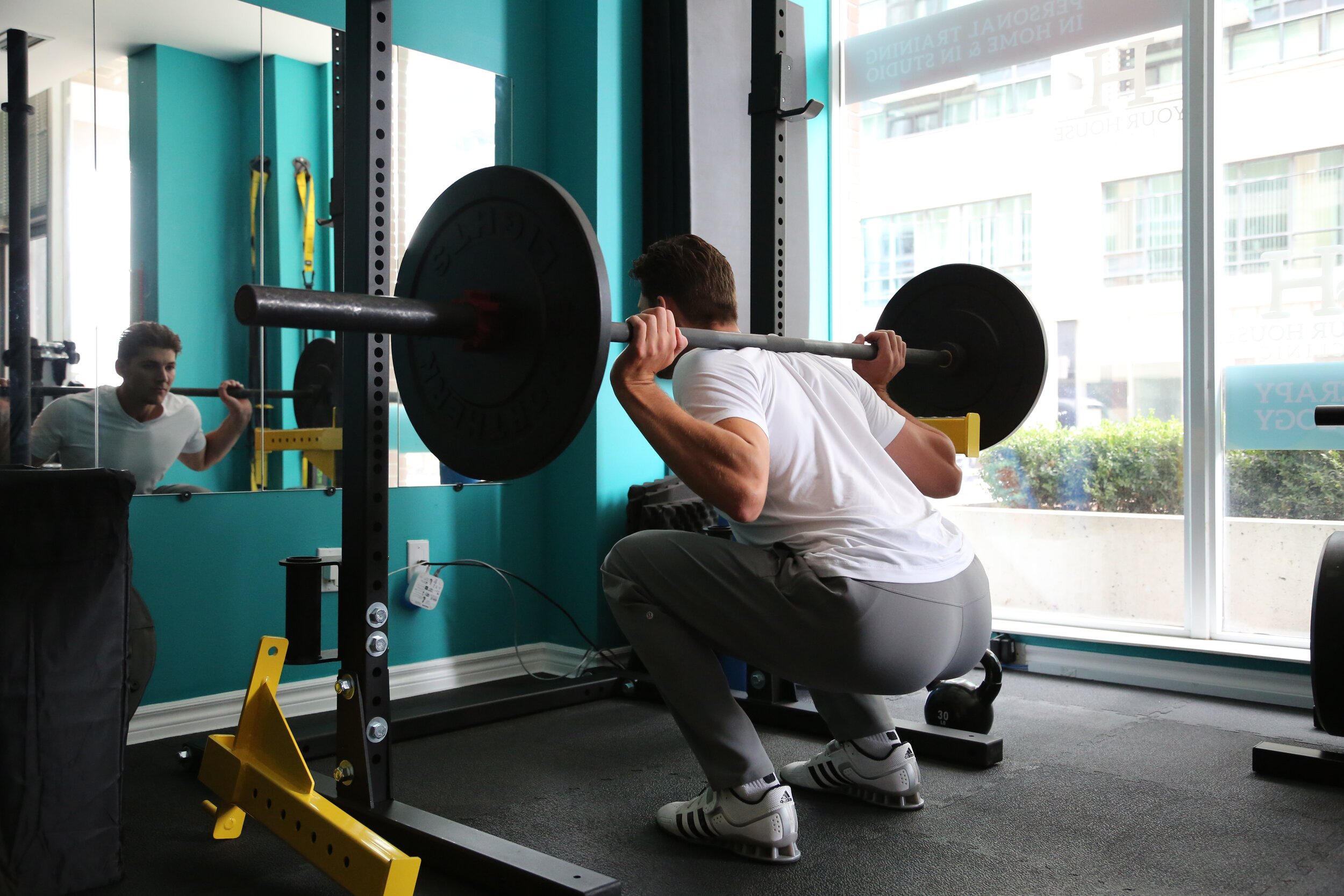
3 Steps to a Better Workout Program
Most workout programs aren’t any good. Here’s what you need to do to make sure your workout program brings you results.
Most of us would agree that nutrition plays a really big role in the results that we see. Some may even say that nutrition is what makes or breaks you. This major emphasis on nutrition is good, and although I believe better nutritional habits should continue to be encouraged, the nutrition obsession has caused a lot of us to overlook the importance of a good training program.
This is especially true during the COVID-19 pandemic. Hundreds of thousands of trainers are scrambling to put together at home workout programs, and 95% of them aren’t any good. Exercises are thrown together at random with the goal to make the client (you) move and sweat as much as possible.
“Well, isn’t getting super sweaty and sore a sign of a good workout?” Nope, not at all.
A good training program and even a good workout contain many intricacies that play a major role in the benefits you may or may not see once you’re done.
So, what does make a good workout program? Let’s find out.
GOOD WORKOUT PROGRAMS ARE PHASED
This is by far one of the biggest mistakes I see when someone shows me the the workout program they’ve been doing from XYZ company. Workouts aren’t phased the way they should be.
What is phasing, exactly? Think of phasing as progression. Your workout program needs to set you up to be able to progress week after week, month after month, phase after phase. In short, your workout program should contain phases that will call your body to progress each time it begins working in a new phase.
Generally speaking, our bodies adapt to exercise in 3-6 weeks. Because of that, phases are generally 4 weeks long. That is the length I use to phase my client’s programs because it gives them a good amount of time to reap all the benefits of the phase, and it simply works well on the calendar to have each phase last one month.
As you go from phase to phase, things need to change in order for your body to change. You need to tell your body to change by changing the way you exercise. I can’t tell you how many times guys my age are stuck and aren’t seeing any results because they’ve been doing 8-12 reps for the last year thinking that it’s the only rep range that can build muscle.
Three of the best ways to change and phase your program is to adjust the amount of sets, reps, and rest as you go from phase to phase. Here is an example.
Phase 1: 3-4 sets, 4-6 reps, 2 minutes rest between sets
Phase 2: 3-4 sets, 8-10 reps, 90 seconds rest between sets
Phase 3: 3-4 sets, 12-15 reps, 60 seconds rest between sets
At week 3 or 4 of each phase, your body will begin to reap all the benefits of the routine you’ve been doing, and will be primed for more change as you transition into higher or lower reps, and more or less rest between sets.
Structuring your workout program as such will allow you to change and progress towards your goal as long as you stay consistent.
Before moving on, we need to address undulating periodization. UP is when there are multiple different rep ranges in a workout, and they change day by day. It would look a little something like this:
Workout A
Exercise 1: 4-6 reps
Exercise 2: 12-15 reps
Exercise 3: 8-10 Reps
Workout B
Exercise 1: 12-15 reps
Exercise 2: 8-10 reps
Exercise 3: 4-6 reps
Workout C
Exercise 1: 8-10 reps
Exercise 2: 4-6 reps
Exercise 3: 12-15 reps
There really isn’t any rhyme or reason. Tons and tons of people have seen great benefit from structuring their workout program like this, but not more so than progressively phasing after each month. I normally don’t recommend UP because it is hard to pin point why your body is or is not responding well. If you do this for a month straight and don’t see any progress, there’s no way of knowing how you should change your reps because you were training at a different range each day.
Far better to simply do one rep range, assess your progress, and adjust for the next phase.
GOOD WORKOUT PROGRAMS ARE BUILT ON FOUNDATIONAL EXERCISES
When creating your workout program, don’t get caught up in the flashiest, most complicated moves. Stick to the moves that stand the test of time.
Good foundational exercises are squats, deadlifts, lunges, presses (bench press), overhead press, pull-ups, and rows. Does that mean curls and calf raises are useless? Absolutely not. But building a strong foundation on these movements will enhance the results your body sees from other exercises.
These exercises will also send a louder strength and muscle building signal to your body because they are compound movements. They use more than one joint and more than one muscle. But what if your goal is to lose body fat? You should still use these exercises with the intent to build strength and muscle. Not only do compound exercises burn more calories, but the improvements you see in strength and muscle will help you burn more calories each day, too. And that will make fat loss way easier.
Generally speaking, you want these exercises to be at the beginning of your workouts, because they require the most energy and mental focus to be done with lots of weight and quality form. I never recommend putting any of these exercises at the end of your workouts when you’re completely gassed.
GOOD WORKOUT PROGRAMS ALLOW FOR REST
The thing I hate the most about fad workouts aside from the lack of progression and phasing is the lack of rest. Everyone wants to feel like they’re dying and getting a great workout from sweating their balls off, so they never rest. And that is what hurts them in the long run.
Let me make this clear. YOUR WORKOUT PROGRAM MUST HAVE REST PERIODS.
If your only goal is to get sweaty, then do your workouts in the blazing sun and just jump around for an hour straight. Actually, don’t do that. But if your goal is to get leaner, lose body fat, and get stronger, you need to allow your body to rest in between sets.
Resting in between sets will allow your central nervous system and muscle fibers to recover so they can lift the same weight, if not, more weight in the upcoming set. Remember, your goal is to progress workout after workout, week after week, and phase after phase. Do you expect your strength to stand a fighting chance if you do 10 heavy squats, rest for 10 seconds, and then try another set of 10 heavy squats? Absolutely not. You need to rest in between sets so your body can progress.
Methodically structuring your rest periods is just as important as the reps you do and the exercises you select for your workout program.
If you want pure strength benefits, you’ll want to rest a little longer, 90 seconds to 3 minutes in between sets as the central nervous system is largely responsible for strength and takes much longer to recover than muscle fibers do. If you want pure muscle building benefits, you want just enough rest between sets to allow your muscles to recover, but not so much rest that the muscle building signal goes down. 45-90 seconds is a good amount of time to rest in between sets when wanting to build muscle. Can you build muscle when resting for 2 minutes and focusing on strength? Yes. Can you build strength when purely focusing on building muscle? Absolutely. The two can certainly go hand in hand. But generally speaking, rest longer if your focus is strength, and a little shorter if your focus is on muscle building. If you want to improve your stamina and endurance, you can rest even shorter, around 30 seconds in between sets.
The main reason most people don’t rest long enough in between sets is because they don’t feel like they need to. All this means is that they need to lift heaver. Your muscles and central nervous system should feel like they absolutely need that rest before they go into the next set.
Your rest is important.
KEY TAKEAWAYS
Good workout programs have phases. Structure your workout to allow you to progress phase after phase (month after month)
Good workout programs have great exercise selection. Use the exercises that are going to give you the most benefit, and add accessory moves from there. Squats, deadlifts, lunges, presses, rows, and pull-ups are your best friends.
Good workout programs have rest periods. Your rest is just as important as anything else. Your muscles and central nervous system need to be challenged with heavy weight. In order to meet that challenge, they need to rest before going into the next set.
ABOUT THE AUTHOR
Adam is a fitness professional, baseball fan, and cookie fanatic based in Fort Collins, Colorado. After hanging up the cleats, he found a strong interest in the human body and how it performs. Since then, Adam has been transforming lives through fitness in a fun and encouraging atmosphere. As an ACE CPT and Fitness Nutrition Specialist, he is constantly moved to help people improve in all walks of life.
WANT MORE FREE CONTENT?
Download any of our guides for FREE in the “free” tab at the top of the page.
How To Enjoy Your Workouts Again
Reaching goals and achieving sound health comes from consistent effort. Consistency can be difficult when you’re sick of your workouts. Find out how to enjoy your workouts again.
Many of us would say that going to the gym can be difficult at times. Waking up and getting a workout in before work can be tough. Taking a right on the way home to get a workout in instead of plopping it on the couch to watch Netflix can be tough.
I disagree.
Going to the gym and eating well isn’t difficult. Doing those things on a consistent basis, day after day until it becomes a habit is where the real challenge lies. In health and fitness, consistency is key. Consistency is what separates the winners from the losers. If you’re unable to be consistent, it shows. If you’re the master of consistency, it shows.
Anyway, there are a few different things that get in the way of consistency, one one of which is boredom. Whether you’ve been training for 20 years or 2, you’ve most likely hit a point in your life where you were no longer excited, motivated, or even slightly moved to go to the gym. That’s not a good place to be.
Having excitement for your workouts and looking forward to what you will do is one of the best things you can have in place for your success. If you are genuinely looking forward to your time in the gym, the chances that you will bail are far lower.
So, what can you do to make your workouts more enjoyable?
Tip #1: Change Your Goal
One of the biggest reasons we go to the gym and eat well is because we want to change the way we look. We want to improve our appearance. There is nothing wrong with that whatsoever, but if you stop and think about it, it doesn’t really end. You’ll spend your time losing 10 pounds. Then you’ll want to lose 10 more pounds. Then you’ll want to gain 5 pounds of muscle. On and on and on, you’ll find yourself changing the same kind of goal your entire life. This will most certainly lead to boredom.
One of the best things you can do in order to enjoy your workouts is change your goal. Find a goal that has to do more with movement or performance. Set out to increase your strength in your bench press, squat, and deadlift. Train to make your back stronger so you can do 10 pull-ups by the end of the year. When you place your goal on movement or performance, the exercises you will do in your workouts will feel more like practice that directly translates to your goal, rather than something you have to do in order to look better.
In fact, you will most likely reach aesthetic feats when you focus on your movement and performance. Getting stronger in your squat will translate to better looking legs. Improving your pull-ups will translate to a more defined back. It’s a win win, and you don’t fall into the trap of dreading your workouts.
Tip #2: Move in Different Planes
There are several different planes that our bodies can move in.
The sagittal plan divides our body into left and right halves. The movements in this plane are up and down movements.
The frontal plane cuts our body in half, front to back. The movements in this plan are side to side.
The horizontal or transverse plane splits our body in half, top and bottom. Movements in this plane include rotational movements.
Most of us spend our time in the sagittal plane moving our limbs and body up and down. We do curls, squats, lunges, rows, and other movements that keep us moving in one direction. Staying in this plane keeps us limited to certain movements that are very similar. This also keeps us closed off to a seemingly limitless world of movement and exercise.
Just because one movement usually happens in the sagittal plane doesn’t mean it you have to get rid of it to enjoy your workout again. You can still get the same benefit of some movements while incorporating them through different planes. Let’s say you keep lunges in your routine because they are helping you create strength on individual legs and aiding your balance, but you are sick of the same thing over and over again. You can take that lunge that would normally happen in the sagittal plane and bring it to the frontal plane by stepping to the side.
There are tons of different movements you can incorporate to get the same results you’re after. Don’t limit yourself. Have fun.
Tip #3: Be a Kid Again
I strongly believe that one of the reasons we tend to lose enjoyment in our workouts and in life is because the older we get, the less we play. Feeding your inner child through play is essential for your workouts as well as your spirit.
Why do you think Crossfit got so popular even in older generations? It’s because they play! They celebrate movement, and they do it well. They move in many different ways. The lift, they run, they jump, they hop, they row, they nearly do it all! Sometimes, you literally need to treat the gym like your adult jungle gym.
Go do some plyometrics. Jump on boxes. Do some agility work. See how fast you can move your feed through those cones or ladders! Jump rope and practice jumping on one foot, and then alternate. Make your movement an art.
Now, don’t go doing these things without a strong foundation of strength and stability. Although it’s important to play, It’s important to keep from injury as well.
The Takeaways
Regardless of where you’e at in life, there is plenty you can be doing to enjoy your workouts. The main takeaway is this: celebrate exercise by improving your movement and strength while incorporating different movements that allow you to play just like a kid would.
About the Author
Adam is a fitness professional, baseball fan, and cookie fanatic based in Fort Collins, Colorado. After hanging up the cleats, he found a strong interest in the human body and how it performs. Since then, Adam has been transforming lives through fitness in a fun and encouraging atmosphere. As an ACE CPT and Fitness Nutrition Specialist, he is constantly moved to help people improve in all walks of life. If you’re interested in hiring Adam as your coach, fill out an application here.






